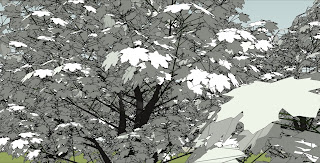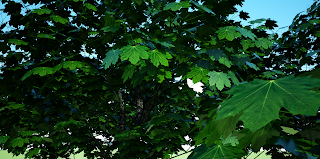The newer versions of this software (
Civil 3D 2009 & 2010) already has these tools that simplify surfaces thus reducing file size. But if you are still using Civil3D 2008 like me (but will be upgrading soon) and working on a 50+Mb file and suffer frequent crashes, then this is for you.
Surfaces created from
TIN files in
civil 3D comprise about a 70% of the file, so the suggested work around was to divide it into smaller manageable portions with each portion being saved on a separate file. A segment of the corridor being designed would have to be done on each portion of the divided surface on separate files. If there is a revision, then all the files had to be revised because they are not interconnected.
The work around I was using was simplifying the surface. Civil 3D 2008 still does not have this nice little feature so everything had to be done manually. From my experience, file size can be reduced up to 60% with minimal effects on the accuracy of the model. I did a test using the simplified surface vs. the original surface. An identical corridor model was placed on both surfaces and volume of and cut & fill was computed. The differences on the results was not even 1/2 of 1%.
This is how it was made:
- Open the drawing file.
- On the plan view, set the contour interval to 1m minor & 5m major.
- Right click surface on drawing & choose surface style
- The surface style dialog box appears
- Choose the contours tab and start setting the interval
- After setting contour intervals, new contour lines will be generated.
- Explode surface twice.
- The existing surface will be taken out from the Prospector tab.
- On the prospector tab, right click surfaces and choose 'Create Surface'.
- Give the new surface a name and expand it. Go to 'Definition' and expand again.
- Go to 'Contours', right click and choose Add.
- The Add contour data dialog box appears.
- On the weeding factors, change the default distance of 15.00m to something like 40m or 50m. Click OK and choose all the polylines from the exploded surface.
- A new surface will be created from the polylines.
- Add new boundary (non destructive) on the new surface by using the old boundary from the previous surface.
























